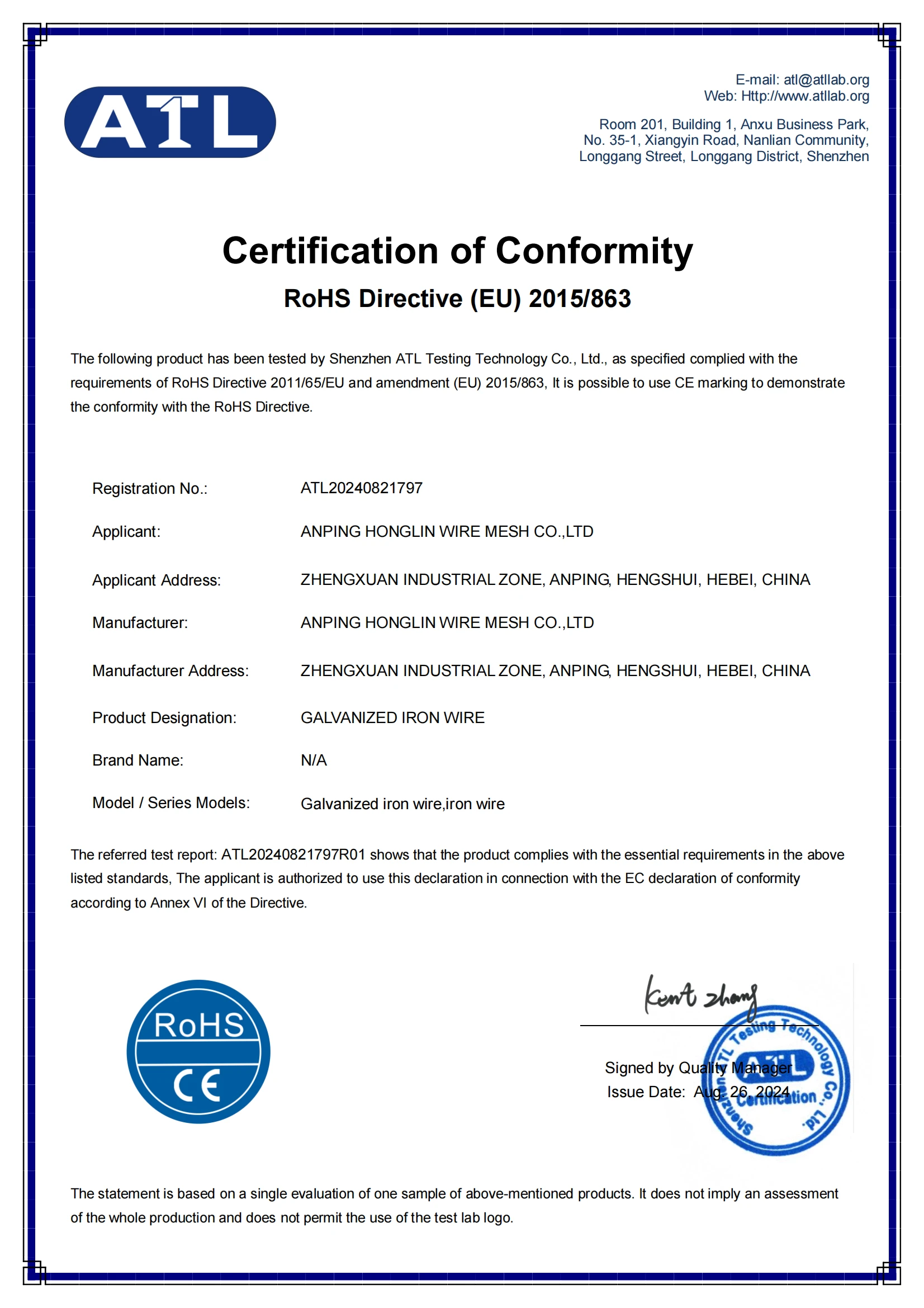twin wire fencing
The Advantages of Twin Wire Fencing A Comprehensive Overview
When it comes to securing properties, farms, gardens, and commercial sites, the choice of fencing material plays a crucial role. Among the various fencing options available, twin wire fencing has emerged as a popular choice owing to its unique advantages. This type of fencing not only combines durability and aesthetics but also provides effective security and visibility.
Structure and Design
Twin wire fencing consists of two horizontal wires that run parallel to each other, connected by vertical wires or rods. This design creates a robust and rigid panel that can withstand various environmental factors. Typically made from galvanized steel, twin wire fencing is resistant to rust and corrosion, making it ideal for long-term use. The usual heights for these fences can range from 1 meter to over 2 meters, allowing for various applications according to specific needs.
Strength and Durability
One of the standout features of twin wire fencing is its impressive strength. The two-wire configuration provides enhanced rigidity compared to traditional single-wire fences. This makes it exceptionally resistant to bending and deformation from impacts, whether from animals, weather conditions, or accidental collisions. Additionally, the galvanized coating prevents deterioration, ensuring that the fence maintains its integrity for many years. In situations where security is paramount, such as commercial properties or high-security areas, twin wire fencing acts as a reliable deterrent against unauthorized access.
Aesthetic Appeal
While functionality and security are primary concerns when selecting a fencing solution, aesthetics also play a significant role, especially for residential areas or public parks. Twin wire fences are often designed with a sleek, modern look that is visually appealing. Available in various heights and colors, they can blend seamlessly with surrounding landscapes, enhancing the property's overall appearance without compromising safety. The openness of the twin wire design also ensures visibility, allowing natural light to filter through while providing a clear view of the surroundings, which can be particularly advantageous in collaborative workspaces or community areas.
twin wire fencing

Versatility of Applications
The versatility of twin wire fencing makes it suitable for a wide range of applications. Whether it’s for residential properties, commercial sites, schools, parks, or industrial facilities, this type of fencing adapts effortlessly to different environments. For gardens and farms, twin wire fencing offers an effective boundary that keeps livestock contained while allowing visibility for monitoring. In urban areas, the unobtrusive design protects properties while adding to the architectural appeal.
Low Maintenance Requirements
Another significant advantage of twin wire fencing is its low maintenance requirements. Unlike wooden fences that might require regular treatment against rot or insect damage, twin wire fences are easy to care for. A simple cleaning with soap and water is often enough to keep the fence looking fresh and new. Additionally, due to the galvanization, there is no need for repainting or routine maintenance that is typically associated with other fencing materials.
Cost-Effectiveness
When considering installation and long-term pricing, twin wire fencing proves to be a cost-effective choice. The durability and low maintenance requirements mean fewer repairs or replacements over time. Furthermore, the installation process is relatively straightforward, which can lead to reduced labor costs.
In conclusion, twin wire fencing stands out as an optimal choice for those seeking a balance between security, aesthetic appeal, and durability. With its robust construction, minimal maintenance needs, and versatility, it serves both functional and aesthetic purposes across various applications. Whether securing a home or enclosing a large commercial space, twin wire fencing offers a reliable solution that meets the demands of modern fencing needs.
-
Space-Saving Chain Fence Hacks Vertical Gardening with Cyclone MeshNewsJul.16,2025
-
Innovations in Iron Nail Wire Production for Modern ConstructionNewsJul.16,2025
-
Creative Uses of Wire Netting Fence in Modern Landscape DesignNewsJul.16,2025
-
Barbed Wire Fence Innovations in Anti-Climb TechnologyNewsJul.16,2025
-
Architectural Uses of Umbrella Nails for Aesthetic Roof DesignsNewsJul.16,2025
-
Architectural Uses of Razor Barbed Wire in Secure Urban DesignNewsJul.16,2025




